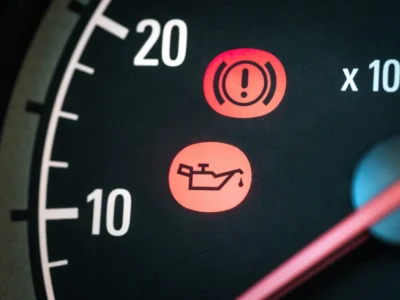
Mazda CX-5 i-Stop Light Flashing: Complete Guide to Causes, Fixes, and Costs

When the i-Stop light flashes on your Mazda CX-5, it’s your car’s way of saying something’s not quite right with the start-stop system. This feature, designed to improve fuel efficiency by automatically shutting off the engine when idling, relies on a precise balance between battery health, sensors, and engine management. In this comprehensive guide, we’ll explain what a flashing i-Stop light means, why it happens, how to fix it, and how much it typically costs to repair.
- 🔍 Understanding the Mazda i-Stop System
- ⚠️ Meaning of the Flashing i-Stop Light
- 🚗 Common Causes of a Flashing i-Stop Light
- 🧰 How to Check the Start-Stop Battery Properly
- 💡 Quick Fixes You Can Try Before Visiting a Mechanic
- 🔄 How to Reset the i-Stop System Manually
- 🧾 Cost to Fix a Flashing i-Stop Light
- 🧠 Preventive Maintenance Tips
- 🛠️ When to Visit a Mazda Workshop
- ⚡ Related Warnings Often Seen with i-Stop Light
- 🧩 Summary: Why Your Mazda CX-5 i-Stop Light Flashes
- 📊 Key Takeaways
🔍 Understanding the Mazda i-Stop System
Mazda’s i-Stop (Idle Stop System) automatically turns off the engine when your CX-5 is at a complete stop — for example, at traffic lights — and restarts it instantly when you lift your foot off the brake. It helps reduce emissions and improve fuel economy.
However, the system is highly sensitive to battery condition, electrical load, and sensor readings. When something goes wrong, the i-Stop warning light will blink orange, indicating the system has been disabled due to a detected issue.
⚠️ Meaning of the Flashing i-Stop Light
A flashing orange i-Stop light typically signals a malfunction within the start-stop system. This isn’t usually an emergency, but it means your car’s automatic start-stop function has been deactivated until the issue is resolved.
Common behaviors:
- The i-Stop indicator blinks orange in the instrument cluster.
- Sometimes accompanied by “i-Stop System Malfunction” or “Battery Management System Malfunction” messages.
- In certain cases, the i-Stop light stays solid, which indicates a temporary suspension (not a fault).
🚗 Common Causes of a Flashing i-Stop Light
The i-Stop system relies on several components working in harmony. When one fails or operates below standard parameters, the system disables itself. Below are the most frequent causes:
You may be interested in reading Mazda CX-5 Engine Management Light — Causes, Fixes, and Full Diagnostic Guide
Mazda CX-5 Engine Management Light — Causes, Fixes, and Full Diagnostic Guide1. Weak or Degraded Battery (Most Common)
The start-stop battery (EFB or AGM type) must provide strong cranking power and rapid charge recovery.
- Cause: Low voltage, poor health (SOH), or reduced cold-cranking amps (CCA).
- Fix: Replace the battery with a correct EFB/AGM unit; avoid using a standard lead-acid battery.
2. Low State of Charge (SOC)
Even a healthy battery can trigger the warning if it’s undercharged.
- Cause: Short trips, prolonged idling, or parasitic drain.
- Fix: Fully recharge the battery with an intelligent charger.
3. Sensor Malfunctions
Faulty input from the brake switch, alternator sensor, or ECU data can interfere with i-Stop logic.
- Fix: Diagnose using a scan tool; replace defective sensors if necessary.
4. Electrical System Load
Heavy loads (air conditioning, lights, heated seats, etc.) can temporarily disable the system.
- Fix: Turn off accessories and see if the light resets after a drive cycle.
5. Battery Replacement Without System Reset
If the battery has been replaced without performing a Battery Management System (BMS) reset, the i-Stop light may flash.
You may be interested in reading Mazda CX-5 Engine Management Light — Causes, Fixes, and Full Diagnostic Guide
Mazda CX-5 Engine Management Light — Causes, Fixes, and Full Diagnostic Guide Where to Find Reliable Fiat Repair Services Near Me
Where to Find Reliable Fiat Repair Services Near Me- Fix: Have a workshop perform a reset using Mazda diagnostic software.
🧰 How to Check the Start-Stop Battery Properly
A start-stop battery isn’t just about voltage — it’s about State of Health (SOH) and Cold Cranking Amps (CCA).
| Parameter | What It Means | Acceptable Range |
|---|---|---|
| Voltage (SOC) | Battery charge level | 12.6V+ fully charged |
| SOH (%) | Battery health | >70% ideal |
| CCA | Starting power rating | Must meet OEM spec |
| CA (Charge Acceptance) | Ability to recover charge | Should be stable |
Testing should be done using a professional battery tester capable of reading both SOC and SOH. Basic voltage meters won’t reveal the full picture.
💡 Quick Fixes You Can Try Before Visiting a Mechanic
- Turn off all electrical accessories and drive for at least 20–30 minutes.
- Clean battery terminals and check for corrosion.
- Fully charge the battery overnight using a smart charger.
- Avoid short trips that prevent full battery recharge.
- Perform an i-Stop reset (see below).
🔄 How to Reset the i-Stop System Manually
If no fault codes are present and the issue is battery-related, you may reset the i-Stop manually:
- Turn ignition to ON (engine off).
- Press the i-Stop OFF switch and hold for 10 seconds.
- The light should blink rapidly, then go off.
- Start the engine and confirm the system reactivates.
⚠️ If the light continues flashing, it indicates an unresolved issue that requires diagnostic attention.
🧾 Cost to Fix a Flashing i-Stop Light
| Cause | Typical UK Cost | Description |
|---|---|---|
| Battery replacement (EFB/AGM) | £160 – £280 | Most common fix |
| Battery recharge/service | £20 – £50 | Recharging or cleaning |
| Sensor or ECU reset | £60 – £120 | BMS or sensor calibration |
| Full diagnostic & labour | £50 – £100/hr | Mazda dealer or specialist |
💰 In most cases, a new start-stop battery resolves the issue entirely.
You may be interested in readingMazda CX-5 Engine Management Light — Causes, Fixes, and Full Diagnostic Guide
You may be interested in readingWhere to Find Reliable Fiat Repair Services Near Me
You may be interested in readingChoosing the Best Seat Covers for Your Fiat 500
🧠 Preventive Maintenance Tips
- Use only AGM or EFB batteries specified for i-Stop systems.
- Drive at least 20 minutes weekly to maintain charge levels.
- Keep terminals clean and tight.
- After battery changes, always perform a BMS reset.
- Avoid leaving accessories on when the engine is off.
🛠️ When to Visit a Mazda Workshop
If the i-Stop light continues flashing after:
- Charging the battery,
- Cleaning terminals, and
- Performing a manual reset,
…it’s time for professional diagnostics. A workshop can check ECU fault codes, alternator output, and battery communication with the BMS.
| Warning | Meaning | Likely Relation |
|---|---|---|
| Battery Management Malfunction | Voltage or communication issue | Often same root cause |
| DSC Malfunction | Stability control fault | Sometimes triggered by low voltage |
| Smart Brake Support Malfunction | Sensor misreadings | Voltage fluctuations can cause false alerts |
🧩 Summary: Why Your Mazda CX-5 i-Stop Light Flashes
| Root Cause | Typical Fix | Severity |
|---|---|---|
| Weak/Old Battery | Replace AGM/EFB battery | Low |
| Undercharged Battery | Recharge fully | Low |
| Sensor Fault | Replace faulty component | Medium |
| ECU Calibration | Perform reset | Low |
| Wiring or Alternator Issue | Diagnostic repair | Medium |
📊 Key Takeaways
- A flashing i-Stop light is almost always battery-related.
- Testing SOH and SOC provides the clearest diagnosis.
- Replacing or recharging the battery usually solves the problem.
- If not, a quick BMS reset or sensor calibration may be needed.
- Always use the correct EFB or AGM type battery — never downgrade.
If you want to know other articles similar to Mazda CX-5 i-Stop Light Flashing: Complete Guide to Causes, Fixes, and Costs you can visit the category Service and Parts.
Deja una respuesta






More content of your interest